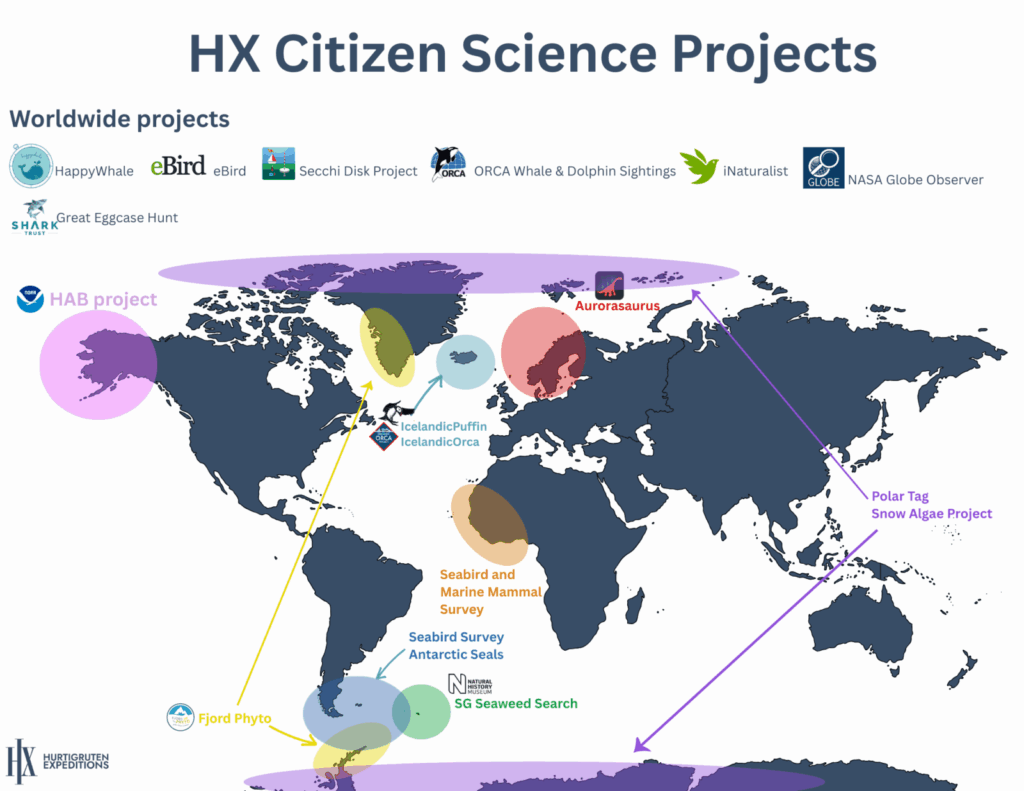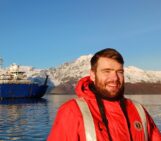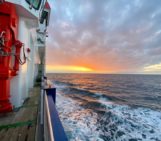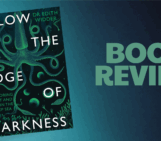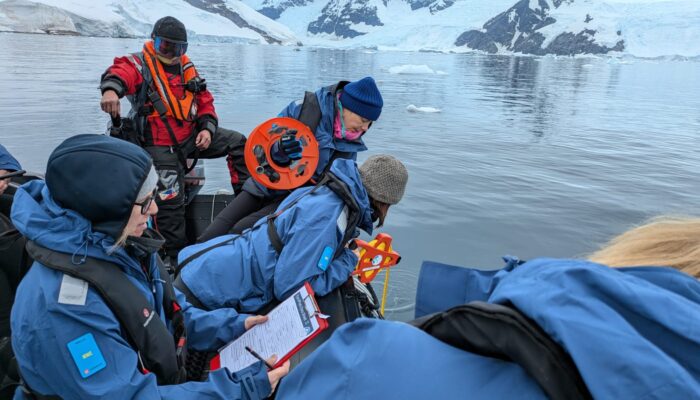
Scientific work can be done not only by professional scientists but also by the general public, often in collaboration with scientific institutions. At HX Expeditions, citizens have the opportunity to contribute to scientific projects on expedition cruises. Join us as we hear from Holly Stainton, the Science & Education Coordinator at MS Roald Amundsen and HX Expeditions, about her experiences aboard an expedition cruise vessel, the various citizen science projects they engage in, and their achievements.
As the Science & Education Coordinator onboard an HX Expeditions (formerly HX | Hurtigruten Expeditions) cruise vessel, I’ve seen firsthand the incredible potential citizen science has in contributing meaningfully to the scientific community —especially in the world’s most remote polar environments. Citizen science, which invites the public to participate in real scientific data collection, is often underestimated in its value. However, onboard our expedition vessels we see a clear opportunity, and fantastic source of collaboration: passionate travellers from all over the world, collecting data as they explore regions which are typically difficult, or expensive to reach.
Our onboard science team supports a wide range of citizen science projects—currently around 20—spanning the diverse regions we sail through. These include biodiversity monitoring through platforms like iNaturalist and eBird, cloud observations to validate satellite imagery with NASA’s GLOBE Cloud project, and phytoplankton research through FjordPhyto in Antarctica and NOAA’s Harmful Algal Bloom program in Alaska.
We actively encourage guests to take part in these efforts during their voyage, and to continue contributing where possible once they return home. In the past year alone (2024), guests aboard HX ships submitted over 30,000 observations, representing an extraordinary volume of data that would otherwise be impossible to gather.
Despite the vast amount of data it generates, the value of citizen science is often overlooked. However, its impact is becoming increasingly clear. Here are just a few examples where citizen science has impacted research and conservation:
- iNaturalist is a platform allowing users to upload flora and fauna sightings to a global database, this database has been used in >4,000 scientific articles and journals. For example, citizen science recordings on iNauralist have been instrumental in the early detection of invasive species which can help the implantation of prompt and effective conservation methods. E.g in 2017 citizen scientists photographed and recorded the first sighting of burrowing crayfish in Canada (1).
- HappyWhale encourages citizen scientists to photograph marine mammals for photo-ID purposes. As well as providing valuable data on migration patterns and behaviour, citizen science observations of cetaceans sighted around the Antarctic peninsula have been instrumental in helping to establish one of the world’s largest ship strike risk reduction plans. In 2020, Antarctic tour vessels committed to operating at slowed speeds for an area of 2000 square kilometers. (2)
- The Harmful Algal Bloom (HAB) project is a citizen science in North America led by NOAA that engages volunteers in monitoring and reporting algal blooms to help track water quality and protect marine ecosystems and public health. In 2024, one of the samples collected by a HX vessel identified elevated levels of a phytoplankton species of concern, which was confirmed and reported by NOAA to coastal communities.
- The Secchi Disk Project asks citizen scientists to measure ocean water clarity as a readout for phytoplankton abundance. Results from the project have been cited in scientific literature, and a 2017 study highlighted how long-term observations from citizen scientists align with global trends in ocean productivity. (3)
To better understand the broader impacts of science engagement during polar expeditions, HX partnered with the University of Tasmania (UTAS) to explore how guests connect with science, what motivates their participation, and how the experience influences their relationship with the environment. This collaboration informed the development of a new “wraparound” education program launched in late 2024, which includes a pre-embarkation course designed to build foundational knowledge and confidence ahead of the voyage. The initiative supports a deeper understanding of polar science and enhances the onboard experience by preparing guests to meaningfully engage with a range of scientific activities, including citizen science. Beyond the ship, the program encourages continued involvement in science by connecting guests to at-home projects and highlighting the value of public participation in research.
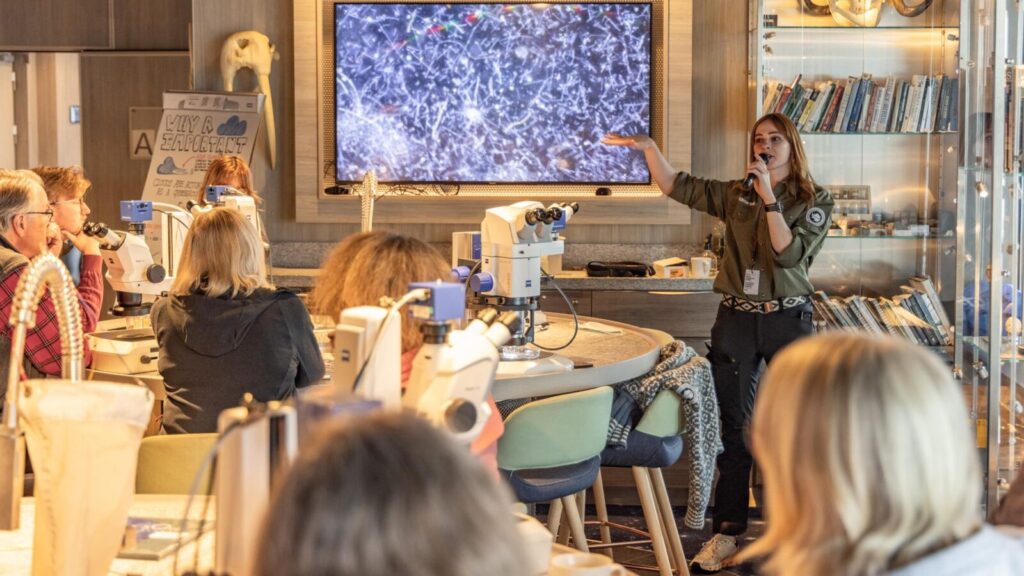
Guests learning how to identify key phytoplankton species involved in harmful plankton blooms (HABs). Alaska, June 2025. (Image Credit: Ted Gatlin)
From my experience, citizen science — whether this is onboard polar expedition cruise vessels, from the comfort of your own home, or anywhere in between— is an incredibly valuable tool, not only for contributing meaningful scientific data but also for deepening public engagement with science, and inspiring the public to protect the world around them.
In countries facing constrained science funding due to changing political landscapes, citizen science may become even more valuable in the future, and be able to help fill critical data gaps that institutional research alone can no longer cover.
References:
- Jones, C.D., 2019. First record of Paintedhand Mudbug (Lacunicambarus polychromatus) in Ontario and Canada and the significance of iNaturalist in making new discoveries. The Canadian Field-Naturalist, 133(3), pp.266–271. Available at: https://www.canadianfieldnaturalist.ca/index.php/cfn/article/view/2223
- Happywhale, n.d. Campaigns. [online] Available at: https://happywhale.com/campaign [Accessed 28 May 2025].
- Drapeau, D.T. and Boss, E., et al, 2017. Citizen scientist observations hint at long-term declines in phytoplankton abundance. PLOS ONE, 12(9), p.e0186092. Available at: https://journals.plos.org/plosone/article?id=10.1371/journal.pone.0186092

